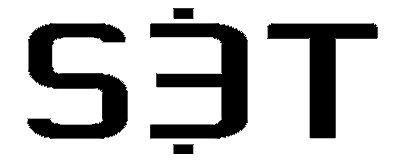S3T Jan 30: Eth beats VISA, IMF angst, dryer bans, mental models, DAOs, unnamed bugs...

As the competition between old and new finance heats up, new platforms exceed the performance of old ones, the traditional sector hurls demands and accusations at early adopters navigating tricky paths toward maturity. It all comes down to mental models.
Old vs New Finance
Ethereum exceeds Visa in Transaction Volume
Ethereum handled more transaction volume than Visa in 2021, Ethereum handling $11.4 Trillion dollars in transactions vs. Visa at $10.4T. These figures and more insights from the highly recommended Year in Eth Report - link below.

The "Wasting Energy" Accusation
Heard phrases like "Bitcoin uses more power than (name of some country)"?
This excerpt from the Congressional testimony provided at the recent hearings on energy impacts of blockchains offers some context:
“The banking system requires 573 TWh of power to produce $1 trillion of value. That is about 2.5 times the amount of power required to produce the same amount of value in bitcoin. And that differential may explain why the traditional banking system as an industry has generally been critical of cryptocurrency activities.”
As this short read and this longer but data-rich comparison of energy use points out, household items like dryers, air conditioners, gaming systems, each consume similar or greater amounts of energy than Bitcoin.
Hmmm. So why no calls for bans on dryers? To take a positive view, I hope that Bitcoin's transparency will spur us to be more inquisitive and conscientious about the energy use of the proliferating material goods and services we take for granted.

Early Adopter making IMF nervous
IMF asking El Salvador to stop using Bitcoin is “like blockbuster asking Netflix to remove movies from the Internet“ - one of the Twitter memes spawned in the wake of the IMF's request that El Salvador stop using Bitcoin as legal tender.
- This Reuters piece reviews the spectrum of angst among nations nervous about the progression of cryptocurrency capabilities.
- NLW notes that maybe the real question is what is more resilient the IMF or bitcoin?
El Salvador's willingness to explore options like Bitcoin suggests to me the intensity of their desire to escape from constraints imposed by the IMF policies, which have a long history of criticisms (here, here, and here) and not so compelling defenses.
El Salvador has a tricky path ahead - navigating its financial obligations, while also maturing the user experience of its very buggy and vulnerable Chivo wallet.
If you want to show your support for El Salvador:
- TripAdvisor's 15 Best things to do in El Salvador can help you plan a trip. Maybe visit El Zonte, the beach town where El Salvador's Bitcoin story started, thanks to a surfer.
- Donate to El Salvador's Habitat for Humanity here.
Mental Models

The mental models for our economy
S3T is interested in the behaviors of key economic roles and how individuals and organizations who play those roles can be more active and effective at addressing the complex problems that occupy so much of our time and worry in the world today. These complex problems are rooted in the mental models that guide finance, healthcare, environmental stewardship and other aspects of our economy. These mental models consist of a set of capabilities and constraints that tell us what is possible or not possible.
Today's established mental models are based on the building blocks of an earlier era: How we thought things had to work. We reasoned about what seemed possible based on the building blocks available to us at the time, and we figured out how to make do with what we had.
When these building blocks change, it gives us the opportunity to rethink our mental models. This is a very important kind of learning for change leaders:
- Learning the new building blocks
- Learning how they enable new mental models
- Sharing and teaching these new mental models to others so they can be more successful at solving the problems they want to solve.
Mental Models for Finance
Today new building blocks are being created in the crypto space - we refer to these as "financial primitives." These new building blocks open the door to new mental models. Its critical for change leaders to take the time to understand these new building blocks such as tokens, DAOs, and NFTs because they enable new mental models for finance.
These new building blocks and mental models already promise advantages over the old models:
- More efficient more automated transaction networks
- More diversity in financial instruments
- Better ability to match those diverse financial instruments to more specific needs
- More inclusion and equity in access to capital and financial services - enable more people to own and grow capital.
Mental Models for Healthcare
One specific evolution that is fascinating and at the root of many many problems that we spend time trying to solve is that of capital coordination. In my previous posts on Moral Hazard in Healthcare, I used the phrase "capital protection" to describe roles that are responsible for managing capital. After hearing this interview with Ian Lee, I see that the phrase capital coordination probably better captures the nature of this important function.
The guiding premise of Ian Lee's work and investing is that Decentralized Autonomous Organizations (DAOs) can enable more efficient and equitable Capital Coordination. This is pertinent to healthcare financial strategy for a couple of reasons:
- What we refer to as healthcare complexity could be better described as a suboptimal solution to a complex capital coordination problem.
- The platforms and processes of healthcare we rely on for this complex capital coordination are inefficient, and one-sided: offering advantages to one set of players while imposing unsustainable burdens on the other players.
This suboptimal solution has its origins in a mental model based on a set of financial primitives (building blocks) from previous eras.
So if DAO‘s promise a better form of capital coordination how exactly would this work for healthcare and how would it make things better?
- Ability to structure more compelling incentives for economic behaviors
- Ability to offer broader financial services and access to funding options
- Better ability to manage, distribute and monetize risk.
Regulatory Note: DAOs do have legal and compliance requirements to navigate. Here are some starting points for learning about them:
- Thorough but crisp summary of the current legal landscape for DAOs and crypto.
- The State to Watch: Wyoming is making it easier for DAOs to do business in the state.
So far it seems that the only safe way to get clear on these requirements is to work directly with regulators. Let them know what you're trying to design, invest the time to understand their goals, and involve them in the design.
Outdoor Notes

First Known Photos of Species
This fascinating project, titled The First Known Photographs of Living Specimens is a running journal of the first known photographs of 2900 species (and counting). Mind you, this is first photos ever, not the first photos that happened to be submitted to a specific platform.
- Photos and notes from each specimen
- Map with markers where observations occurred. More widely distributed than you'd think - not just remote far away places.
This project offers an amazing view into how our understanding of the natural world continues to unfold.

Sort of Related: The photo above shows a leaf hopper Telamona Reclivata a leaf hopper which as yet has no English name. I was excited to discover that I was one of the first few observers to photograph this little bug and share via the iNaturalist app. I think I was maybe #8. This is not the same as being the first ever to photograph a living specimen, but it was very exciting just the same! Learn more about this insect at iNaturalist or BugGuide.
Mental Models related to the Value of Nature
I do hope that someday we are able to arrive at a general agreed upon consensus (a mental model!) of how to properly value the exquisite treasures of nature. The dominant mental model accepted by economic policymakers is unfinished:
- The harvestables of nature have been given narrow market-centric valuations.
- The services of nature have not been valued at all. They are instead assumed to be ever-present free conveniences in infinite supply.
This is a topic that I plan to unpack in future editions.
Final Note
Hope you are all S3T for a great week! Continue the conversation on Twitter @RalphPerrine. Thank you for reading, and please feel free to forward this newsletter to a comrade.
Best wishes in your endeavors.
Ralph
Opinions mine. Not financial advice. I may hold assets discussed.


Member discussion